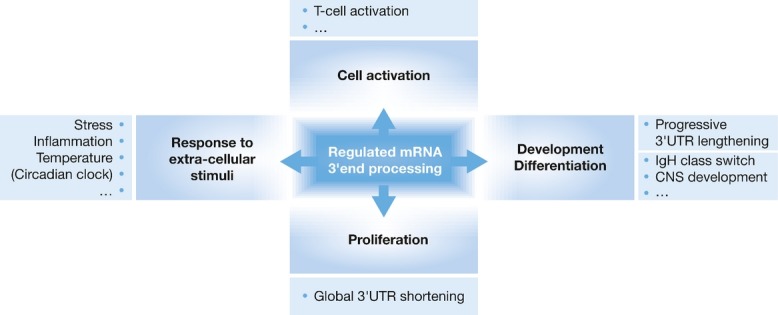Figure 3.

The control of 3′end processing post-transcriptionally adjusts mRNA and protein levels in response to environmental conditions, such as stress or inflammation. Further, it plays a role in development and differentiation, as in the case of the immunoglobulin heavy chain class switch and in the development of the central nervous system (CNS). In addition, alternative 3′end processing functions as a regulatory mechanism upon cell activation, e.g. T-cell activation, and proliferation. While a progressive lengthening of 3′UTRs via APA is typically observed during development and differentiation, higher proliferation states are associated with global 3′UTR shortening.
